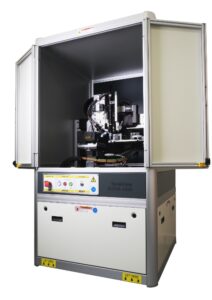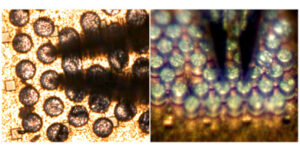EOTPR 4500 Electro Optical Terahertz Pulse Reflectometry
Electro Optical Terahertz Pulse Reflectometry(EOTPR): The world’s fastest and most accurate fault isolation system.
The EOTPR 4500 system couples the EOTPR’s world leading sub-5 µm fault isolation accuracy with the next generation in automated probe stations. The purpose built auto prober has been designed to address the needs of today’s most advanced IC packaging technology, and can probe down to 5 µm pads on IC packages up to 150 mm x 150 mm in size.

Key Features
• Purpose built auto prober for advanced IC packages.
• Can probe down to 5 µm pads on IC packages up to 150 mm x 150 mm.
• Availability of guided fully manual, semi-manual and automatic probing modes.
• Data acquisition of less than 5 seconds per pin.
• User interface software to manage recipe creation and data display.
• Sub-5 µm fault isolation accuracy.
• ODB++ file import for contact mapping and recipe generation with optional QuickView software.
 Needle-nose probe tip
Needle-nose probe tip

 Needle-nose probe tip
Needle-nose probe tip 

